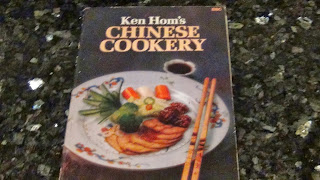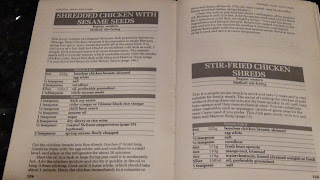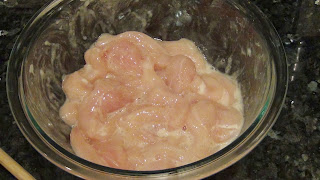But it's Kathrya whom we have to thank for the all-important ingredient: guajillo chiles. This recipe was not straightforward at all, but - as you'll see - it was absolutely worth it. First for the guajillo adobo:
Take 12 guajillo chiles:
 |
| We think they are guajillo chiles. |
 |
| Definitely a small child. |
Toast in a skillet (the chiles, that is):
 |
| This is not bacon. Move along. No bacon to see here. |
 |
| 'Da!' |
Brown pieces of pork shoulder:
While they are browning, finish off the adobo by adding the drained chiles to garlic, sugar, vinegar, cumin, and water in a blender:
Once this has been blended together to make a smooth paste, we have the famous "guajillo adobo", which can be used as a marinade or a cooking sauce (which is what we are doing here). Add the sauce to the pork:
Fry the sauce with the pork pieces for a few minutes and then add stock:
Simmer for a couple of hours (we put it in the oven at 350ºF). The result is extraordinary:
The cooking liquid has almost evaporated away entirely. As the book says, you'll find pools of oil on the surface, indicating the sauce is 'seasoned' ('sazonada'). The meat was so tender it was impossible to lift out without the pieces coming apart. The spiciness of the dish was lovely: deep and warm without being fiery. With some plain rice and some side (can't remember what), it was truly heavenly.
Next up, Alton Brown. Could he top this amazing dish?

























